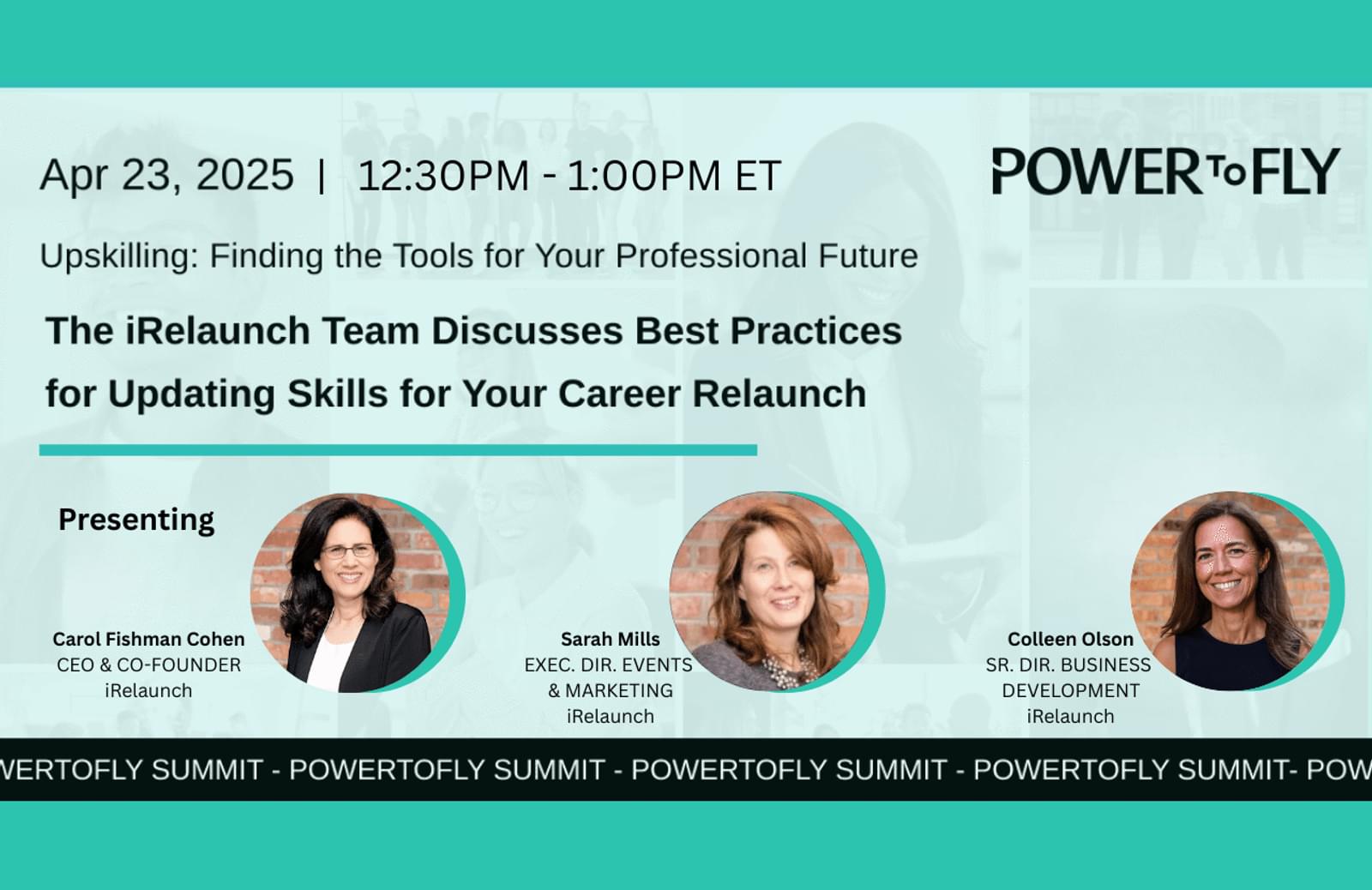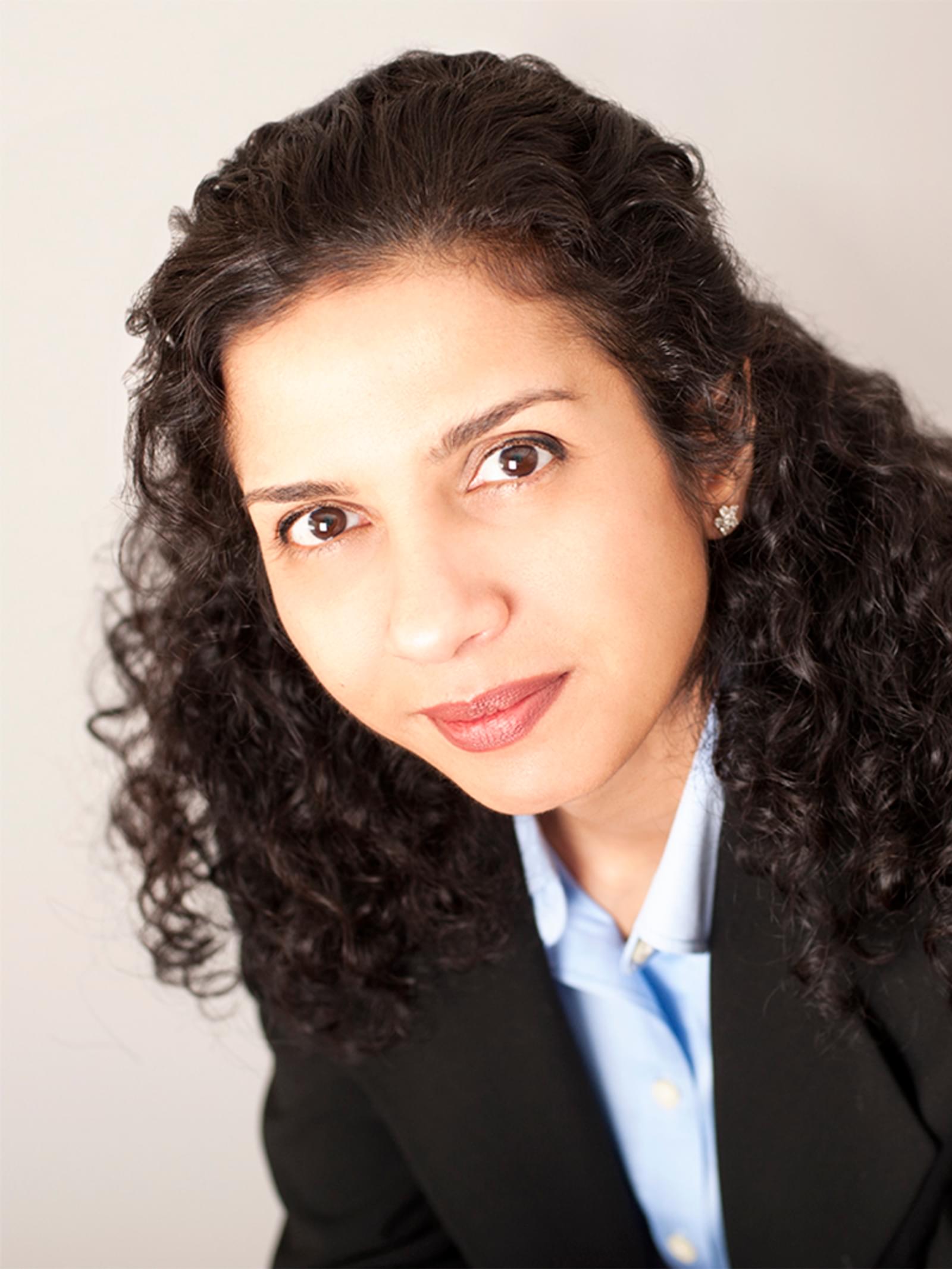
I relaunched in 2016 when I was in my late 40s, after a 13-year career break. I had been ready to return to work several years earlier, but the 2008 financial crisis hit, and I convinced myself that the odds of my being hired would be low. I started to do some part-time consulting work for a previous employer (fund manager) to keep my skills current. However, as my son grew older and more independent, I knew that I needed to find something else to fill my time and a place to direct my mental energy. The wakeup call came when my dog died and the emotional recovery from that event took several months. I knew then that I needed to get serious about taking steps towards finding an occupation. My husband was busy with his career, and my son was getting closer to attending college.
Despite the wakeup call, I didn't have any confidence in my abilities to make a change after such a long career break. I ultimately decided that my need to change my life was stronger than the voice inside me that was telling me that I couldn't do it, so I took baby steps forward. I took free courses on Coursera in financial accounting and began to build confidence by passing the exams.
I started talking to parents at my son's school who had relaunched and learned about the iRelaunch Return to Work Conference which I later attended. I also started networking and researching careers in treasury management, which was the field I had decided that I had enjoyed the most throughout my earlier experience. I signed up to take the Certified Treasury Professional exam and proceeded to engage in self-study for many months. Passing a 3-hour exam on the first attempt was the confidence boost that I had been needing.
As my confidence grew, I signed up for a career coaching seminar recommended by a friend in hopes that I actually had a chance. The seminar helped me to frame my experience and to develop a script that was an asset for later interviews. It wasn't always easy, and I still remember one networking interview at which I performed poorly because my voice was quivering the entire time. However, I was determined, and the baby steps had proven to me that I was still capable of growth.
(Sangita was selected by Goldman Sachs to represent the firm's Returnship program at the iRelaunch Conference in 2016 and was promoted to Vice President within ten months of her full-time offer. She joined Scotiabank as a Director in U.S. Treasury in October, 2021.)
We caught up with Sangita to dive a little deeper into her relaunch story and the advice she has for other relaunchers...
What did you find most challenging about relaunching?
I think I was my biggest challenge. It was my own internal voice telling me it's been too long. You've been out too long. You can't do this. Who's going to want to hire you after 13 years out of the industry? It was challenging to get over that mindset.
Because it really takes a growth mindset to do something like this. You have to be convinced that you could learn whatever you need to learn to do the job. Also, you just need to have confidence going into any interview. I didn't think I had the confidence. And I flubbed a couple of interviews, but I had to get past that and say, you know what? Just keep going. Just keep meeting people, keep having conversations and something will happen.
I had no doubt that I would have what it took to learn what I needed for the role. I have the work ethic to put in the time to take some classes to brush up on material. I think what I had the doubts about was would I be able to enter a professional environment again.
And it was challenging: entering a professional environment, especially at a place like Goldman Sachs which is kind of fast paced, hard charging, and a very young organization. So, small things would be challenging. Like being on an open plan floor. Everyone's there talking, there's a lot of movement. And here I am being used to being at home, in a quieter setting. Getting used to working with all that movement and noise around me was a huge challenge in the beginning.
Other challenges were things like Outlook. I had no clue how to set up meetings in Outlook and use all of its other capabilities. That took some learning. I also had to get really good at PowerPoint because the industry uses a lot of PowerPoint. I had to learn to use Excel pivot tables to analyze data. I eventually picked these skills up, but technologically, I would say those were my biggest challenges.
I wish I had taken a few Microsoft classes to learn Outlook, Excel pivot tables and PowerPoint. Although these didn’t stop me from getting the job, it made it harder to ramp up quickly because I fumbled the first couple of weeks trying to figure out how to do those things. It would have been a smoother transition had I learned that upfront. Then I could have focused more on learning the content rather than this other stuff.
How did being a part of a return-to-work program help your relaunch?
Early on, I got the support that I needed from my managers, which was very good. I think it really makes or breaks a return-to-work program if the manager is not great. I was reporting to two very supportive people who helped me along and gave me the right projects to demonstrate my skillset.
To me, being part of a return-to-work program cohort gives you an opportunity to just jump back in. Everyone understands that you've taken time off. They've accepted it. That's what the program is all about. And then, all of that just gets put away, and you can put your mind directly to the task at hand, which is getting the job done, focusing on the work, and proving what you're capable of.
Had I not done it through a returnship program, it would have taken me a lot longer to interview and keep explaining why I had been out for 13 years and why I was looking to come back now. The programs are structured so that you don't have to do all that.
What's been the most gratifying about getting back into the professional workforce?
I was at the stage of my life that I needed to stay busy, and I needed to feel intellectually engaged. I loved finally getting to a place where I was meeting new people and making connections. Socially, I had an easier time building rapport with people than I thought I would. I ended up surprising myself.
And I loved having an impact on the junior team. I was managing young people, and I could tell that my older perspective was something that helped them to grow. I started seeing the impact I was having on their careers and their growth. All that felt rewarding to me and was a huge part of what I was getting out of it in the end.
I wasn't telling everyone my age, but I wasn't trying to hide it either. They knew I had an older son, and that I had more experience than others. I was willing to share my life experiences with them, so they could learn from them. It was rewarding to see them being responsive to that.
What tips would you like to share with relaunchers?
Number one is to brush up on the basic skills like Outlook, PowerPoint, and Excel.
Number two is don't be scared to network. Just tell people you're looking; tell people you're interested in going back to work. Because the only way I heard about iRelaunch is when I was being very open with the moms at school, some of whom had already relaunched. If you're embarrassed about telling people that you want to do something, or that you're looking for a job, then you're not going to necessarily make those connections.
I also learned about the field of liquidity risk through the Certified Treasury Professional program, and that informed my approach to networking. I was able to ask people questions and talk to them about what that meant. That helped me to have some background in it before I interviewed at Goldman Sachs.
Also, I would advise relaunchers to pick the role wisely. I picked a role in corporate treasury at a very large investment bank where I knew, going in, the time commitment would be huge to learn what I needed to learn. But I knew I could make the commitment because I didn't have very young kids at home. I think I would have made a different choice if I had very young kids and I needed more flexibility.
There are many roles out there to get back into work. I think the big mistake would be if you pick a role that requires many hours when you need flexibility at a certain stage in your life. I knew at that time that my son was old enough to step in and take care of the transportation to school, sports events, and his academic schedule. I didn't have to worry about anything. He filled the gap quickly because he knew I had to focus on the job until I could get comfortable with it.
I think the target role should match your skills, match your education, and be generally in line with the time commitment you are able to make, in order to convince an employer that you're going to be fully committed. Because that's what they're looking for. So, you’ve got to go into that interview and convince them that you're fully capable of giving that commitment that the role requires. And in order to do that, you need to have picked a role that fits the stage of life you are at.
Did this story motivate you or inspire you!?
Do you have a relauncher success story of your own to share with us and the rest of the relauncher community?
Sharing your inevitable success is a great way to give back as your story will inspire and motivate other relaunchers, especially if your story is not the typical story that is told.
It is our hope that all relaunchers are able to see themselves reflected in relauncher success stories as we all know how important representation is. We respectfully ask you to share only the details of your relaunch you are comfortable sharing, but to indeed share your story with us so we can be sure to document and feature a more diverse population of relauncher experiences, backgrounds and identities.




